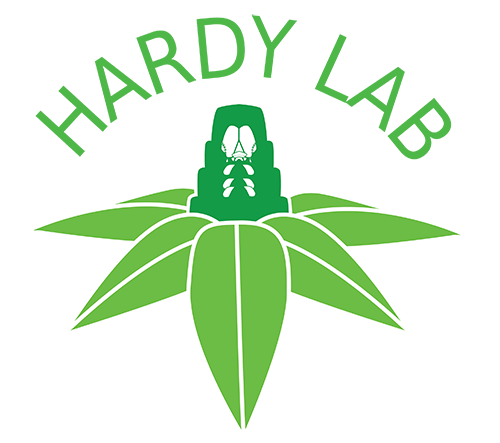Valid Names Results
Coccus lizeri is now Mariacoccus marianus (Cockerell, 1902) (Coccidae: Mariacoccus)
Nomenclatural History
- Paralecanium marianum Cockerell 1902k: 455. Type data: BRAZIL: Rio de Janeiro State, Maria, on undetermined tree.. Syntypes, female, Type depository: Washington: United States National Entomological Collection, U.S. National Museum of Natural History, District of Columbia, USA; accepted valid name
- Lecanium lizeri Fonseca 1957: 133. Type data: BRAZIL: Sao Paulo, Campinas, on coffee.. Syntypes, female, Type depository: Sao Paulo: Museu de Zoologia, Universidade de Sao Paulo, Brazil; junior synonym (discovered by HodgsoWi2018, 142).
- Coccus lizeri (Fonseca, 1957); Ben-Dov 1993: 80. change of combination
- Mariacoccus marianus (Cockerell, 1902); Hodgson & Williams 2018: 140. change of combination
Common Names
Ecological Associates
Hosts:
Families: 2 | Genera: 2
- Celastraceae
- Maytenus | Hempel1904
- Rubiaceae
- Coffea | Fonsec1957 Kondo2013
- Coffea arabica | FornazMaWi2017
Geographic Distribution
Countries: 1
- Brazil
- Espirito Santo | FornazMaWi2017
- Minas Gerais | FornazMaWi2017
- Sao Paulo | Cocker1902k Fonsec1957
Keys
- GranarPiFe2010: pp.397 ( Adult (F) ) [Coccus species on coffe in Brazil] Key as: Coccus lizeri
Remarks
- Systematics: Hodgson & Williams (2018) determined that this species belongs to neither Paralecanium nor Mesolecanium. In addition, in possessing three types of ventral tubular ducts, they determned that it was clear that it did not belong to either the Paralecaniini (despite having the eye-spot displaced onto the dorsum) nor to the genus Coccus which has only 1 type of ventral tubular duct. The position of the eyespot on M. marianus, along with the rather broad marginal setae, may be why Cockerell suggested it was a Paralecanium species. The presence of three types of ventral tubular ducts suggests a possible relationship with the Pulvinariini, but it does not fit into any of the current genera and has not been recorded as producing an ovisac. Therefore, they raised a new genus, Mariacoccus Hodgson & Williams for it, although its wider relationships are uncertain.
- Structure: Unmounted material. “Long-oval, a little over 4 mm long and 2 wide, shining red-brown, strongly pitted; back obtusely longitudinally keeled. Marginal area with some very thin easily deciduous wax” (Cockerell, 1902: 455 in Hodgson & Williams, 2018). Slide-mounted adult female. Body oval, probably quite convex in life. Anal cleft apparently not fused but with parallel margins, about 1/7th total body length. Length 3.5–4.0 mm, width 2.75 mm. (Hodgson & Williams, 2018)
- General Remarks: Description and illustration of adult female by Fonseca (1957) and by Granara de Willink et al. (2010). Detailed redescription and illustration in Hodgson & Williams, 2018.
Illustrations
Citations
- BenDov1993: catalog, 80, 205-206
- Cocker1902k: description, distribution, host, taxonomy, 455
- Cocker1902p: distribution, 254
- Fernal1903b: catalog, 199
- Fonsec1957: description, distribution, host, illustration, taxonomy, 133-135
- FornazMaWi2017: distribution, host, 3086
- GranarPiFe2010: description, distribution, host, illustration, taxonomy, 394-397
- Hempel1904: description, distribution, host, taxonomy, 317
- HodgsoWi2018: description, diagnosis, illustration, taxonomy, 140-142
- Kondo2013: distribution, host, 45
- SilvadGoGa1968: catalog, distribution, host, 149
- WilliaBe2009: catalog, taxonomy, 30
- WilliaDe2020: taxonomy, 198


